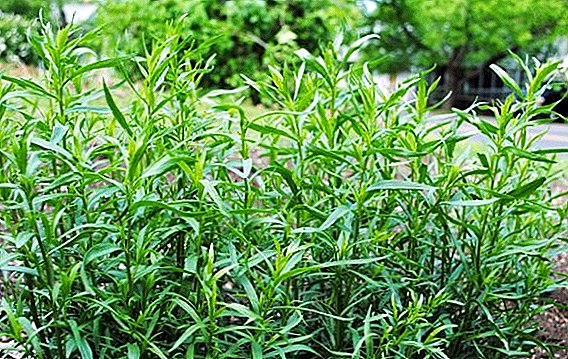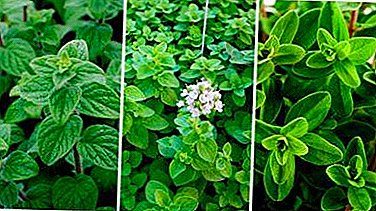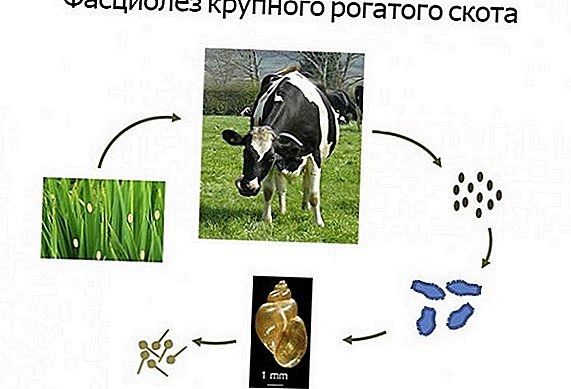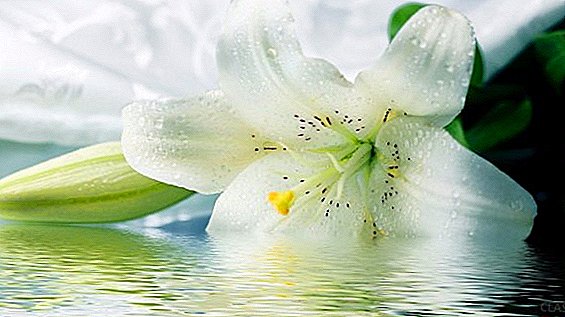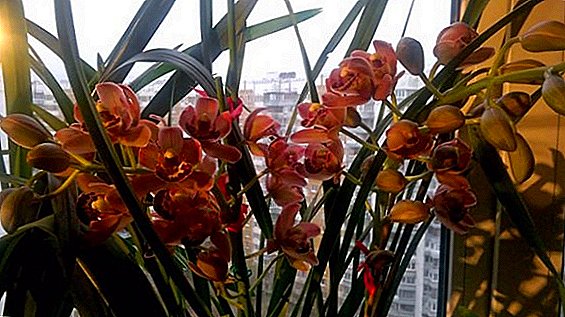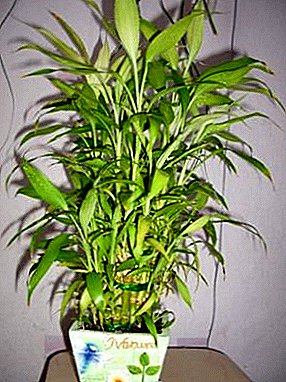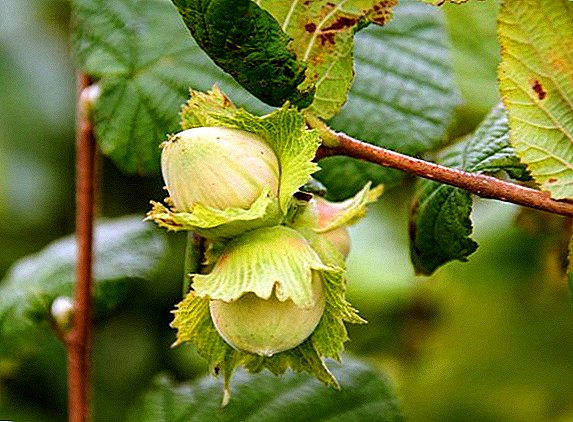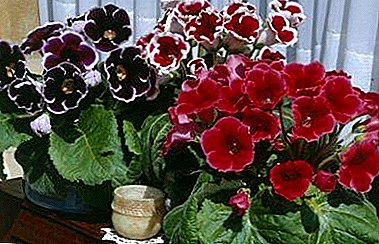 Clematis have always been demanded flowers from any gardener or gardener. They are beautiful, unpretentious in care and are distinguished by beautiful views with variegated colors, suitable for every taste. Variety "Ernest Markham" - one of these and is considered one of the most popular. He has large flowers, he looks like a climbing vine, and looks great both in the garden and on the windowsill in the apartment. How to care for him, where to plant and what can harm your favorite flower - let's talk about all this in this article.
Clematis have always been demanded flowers from any gardener or gardener. They are beautiful, unpretentious in care and are distinguished by beautiful views with variegated colors, suitable for every taste. Variety "Ernest Markham" - one of these and is considered one of the most popular. He has large flowers, he looks like a climbing vine, and looks great both in the garden and on the windowsill in the apartment. How to care for him, where to plant and what can harm your favorite flower - let's talk about all this in this article.
Variety description
Clematis "Ernest Markham" is included in the group of Jacanman shrub vines, which is combined with large and very beautiful flowers, a developed system of roots and shoots that require constant pruning. The whole species appeared around 1858 in England.
He repeatedly yielded to crossing and processing, and eventually moved into a separate group. This particular variety got its name from the creator E. Markham, which he presented the subspecies officially in 1936 and introduced him to the family.
Clematis shoots reach more than 5 centimeters in length. The size of the flowers is large, usually from 10 to 13 centimeters, sometimes as many as 25. Usually they are collected in small groups.
The height of the plant itself may also be different. Some representatives reach only 1 meter, while others can overcome the mark of 6-7.  The variety grows moderately, but blooms a lot, long and steadily. Flowers appear relatively late, differ in velvet texture, stamens and bright color. The color is usually bright red, but there are also shades of purple and pink.
The variety grows moderately, but blooms a lot, long and steadily. Flowers appear relatively late, differ in velvet texture, stamens and bright color. The color is usually bright red, but there are also shades of purple and pink.
Did you know? Flowers, like people, can react to others and to their surroundings. During the study, the state of the flowers was recorded. From one person broke off the petals, and after another - courted and talked. The color response was completely different.Clematis does not smell. Experts recommend planting near both tall and low-growing plants. It will look very nice and will allow you to completely fill the entire space, while they will bloom almost until the frost.
Features landing "Ernest Markham"
Clematis refers to plants that grow slowly, so the place to plant is better to choose carefully and for a long time. It is important to pay attention to the ground with lighting.
Check out the clematis variety Ville de Lyon.

Choosing a place in the garden
The flower loves the sun and warmth, but the landing should be carried out so that the roots and the base fall under the shade. If the ground is overheated, the plant may die, and not rooted.
In order for clematis to feel well, it is better to plant letniks near it, which will cast a shadow on the young seedlings. Further, a sufficient amount of sun is required for the plant to bloom.
We recommend you read about the reproduction of clematis (seed method and grafting) and the causes of poor growth of clematis.It is also recommended to choose a place where there are no drafts, as the flowers do not like it. In addition, it interferes with flowering, and since the shoots can be very long, strong gusts of wind can injure the flowers.
Soil requirements
The choice of soil is also very important. The ground in which water often stagnates does not suit clematis at all, so marshlands will not fit right away.  If the landing is carried out at the walls, you need to take care that the water after the rain does not accumulate at the roots. The plant takes root on almost any kind of soil, the main thing before planting is to fertilize it with phosphates and ashes.
If the landing is carried out at the walls, you need to take care that the water after the rain does not accumulate at the roots. The plant takes root on almost any kind of soil, the main thing before planting is to fertilize it with phosphates and ashes.
Did you know? Flowers are able to navigate in time. In 1720, Carl Linnaeus created the first flower clock, focused on the activity of various plant species. True, they could work only in sunny weather.
Depth and landing pattern
This plant variety can grow for many years in the same place, sometimes even for decades. And so it is very important to choose a good landing place. The size of the hole should be sufficiently free for the development of the root system, at least 60 by 60 centimeters.
It is important to calculate the distance from one landing hole to another. Leave a little space for the development of shoots and the formation of beautiful branches.
A layer of drainage, for example, pebbles, gravel and other small pebbles, is poured onto the bottom, at the bottom of the pit, and then sprinkled with sand. Next, the hole should be filled with loose soil, necessarily fed. You can mix all the soil with humus, peat and give a little sand. Superphosphates are added there, some ash and, if possible, about 200 grams per one hole of complex fertilizers for plants.
Sometimes, when landing, a seat on a support is immediately calculated, which is useful during growth and flowering. You can take care of this in advance.
Important! An important point when planting is that it is possible to place young plants in the pits only not earlier than the 30th day! It is necessary to prepare and fertilize the place in advance, leaving it for a month, and only after that place the seedling.When landing, there is another very important point - the depth. Clematis neck "Ernest Markham" when planting should be recessed into the ground by about 10-13 centimeters. This will allow the plant to calmly survive the winter, take root and simplify the care of the flower in the future. The soil near the roots is well watered, after which the rest of the land is already filled.
How to care for a plant
In the care of this variety there are several basic rules that will ensure its healthy and full growth and affect the future flowering. 
Watering
Clematis needs constant regular watering. If the place is chosen correctly, that is, it is the sunny side, then you can water about 10 liters of water about once a week. After rooting at 2-3 years of life and feeding begins.
Be sure to ensure that the water in the soil does not stagnate, as this plant does not like the most.
Pruning
Very important for the look and pruning. It takes a lot of time in caring for the variety and directly affects flowering. In the first year or two you need to prune all the plants, even those that are going to bloom.
Then you should focus on the abundance of flowering. The flowers that appear during one year are pruned in the fall almost to zero, to the ground level. If they appeared on the shoots of last year, then you should only shorten them a little.  It is very important to remove the remains from the support, carefully twist and fold for wintering. Weak shoots are removed. Like all flowers of the Jacqumann group, they should be cut in the fall after flowering. It is also recommended to carry out cuttings in the early spring after shoots of overwintered flowers appear.
It is very important to remove the remains from the support, carefully twist and fold for wintering. Weak shoots are removed. Like all flowers of the Jacqumann group, they should be cut in the fall after flowering. It is also recommended to carry out cuttings in the early spring after shoots of overwintered flowers appear.
Learn how to do clematis with your own hands.
Top dressing
Clematis usually grows roots and green mass after planting in the first few years; therefore, flowering may be rare or absent. To ensure good development, the best solution is to cut all the buds, so the plant will save power and be able to more fully develop. Feeding in this time is not required.
Shelter for the winter
If we are talking about the shoots that bloom, they should be twisted and placed on the branches of a twig or straw. The plants themselves are also advised to cover with straw or spruce, but not with polyethylene or other material that limits the access of air. If the flower will pass, it will die from rot during the winter.
Important! This grade is included in the third group of pruning. This is due to the fact that the flowers appear more often on those shoots that are formed in the current year. Therefore, with pruning should not be in a hurry and carry it to the maximum.
Clematis Diseases and Pests
- The description of this type of clematis confirms the general susceptibility to the appearance of rot, as in all representatives of the species. If there is too much moisture, or the flower has not been prepared properly for the winter, then get ready for the fact that clematis "Ernest Markham" will suffer from rot.
- One of the enemies is considered to be a fungus, both fusarium and wilt, that is, wilting. They appear, again, from an excess of moisture in the soil.
- Among the pests that can strike a plant, there are nematodes.
- If they appeared - fight is almost impossible and the best step is to get rid of clematis. If thrips, mites, flies appear, then they should be removed using conventional anti-insect agents.
Beautiful flower varieties "Ernest Markham" - this is a real decoration. Beautiful bright flowers are sure to attract attention, will long please the eye with its originality and attractiveness.  If your choice fell on clematis - do not hesitate, this plant is very easy to clean, unpretentious and suitable for any dacha or even home.
If your choice fell on clematis - do not hesitate, this plant is very easy to clean, unpretentious and suitable for any dacha or even home.


